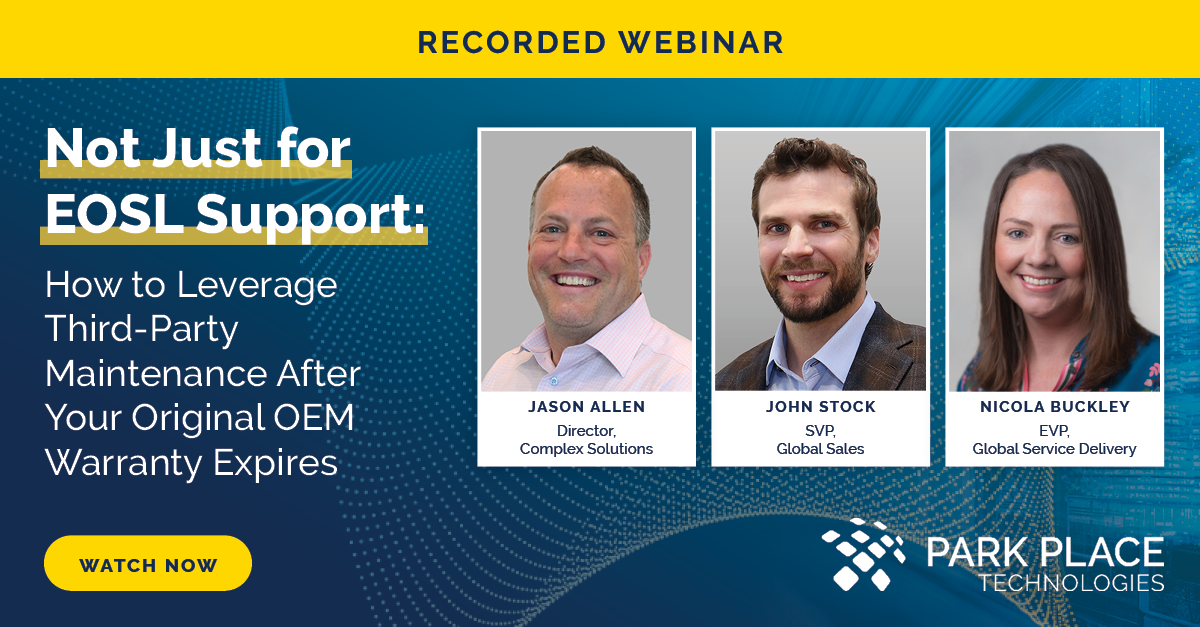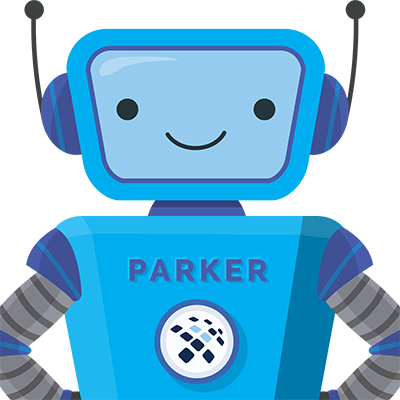Third Party Maintenance for Cloud Service Providers
Park Place Hardware Maintenance
More support, less cost, and longer hardware lifespans can make a big difference in the bottom line.
The cloud services market is tough. The dominance of a few hyperscale providers has left other companies competing relentlessly for the 20% of remaining market share that hasn’t been gobbled up by the biggest of the big names. CSPs must search out any advantage in cost, efficiency, or reliability to eke out a better position for their products.
Increasingly, third party maintenance providers are becoming a resource. There are several reasons why.
Maximizing Uptime
A reputation for reliability is essential in the CSP market. Even minor downtime can lead to customer flight. Data center design, multiple redundant internet connections, hardware choices, and facilities management all have their role. The right third party maintenance provider can also contribute.
First, these support-focused companies take on responsibility for routine maintenance tasks, so basic upkeep never falls through the cracks. Additionally, 24/7 remote monitoring with integrated AI tracks and learns from system performance to identify issues at the first sign. Direct access to Level 3 engineering means a fix is initiated immediately, without tapping internal resources.
These factors come together to help avoid problems, detect them early, and ensure prompt, effective response. That maximizes uptime and keeps customers happy and subscribed.
Adding Expertise
There is a talent gap in IT. A robust job market and a limited workforce trained in STEM fields has CSPs scrambling to find the employees they need.
Third party maintenance providers can supplement internal staff. A company like Park Place Technologies maintains a deep bench of individuals with expertise in networking, storage systems, servers, even mainframes, and we have engineers with experience working with various OEM equipment, from Cisco and Juniper Networks to IBM and Dell EMC.
Leveraging our team means a CSP needn’t find, recruit, and pay a premium to have experts join their team. They can concentrate investments on staffing other parts of the organization.
Limiting Cost
A final consideration is cost. OEM contracts on IT equipment are expensive, and they sometimes increase in cost as equipment ages. Third party maintenance agreements are priced an average of 60% below OEM support, yet the best providers include more features. What’s more, reputable providers support equipment long after the OEM declares end of life, so clients can continue to extract value from existing hardware investments.
More support, less cost, and longer hardware lifespans can make a big difference in the bottom line. If these advantages, in turn, allow a CSP to deliver a more cost-effective product or to invest in innovation, it might be the solution required to win in today’s marketplace.
Learn more by requesting a quote from a Park Place Sales Associate.



